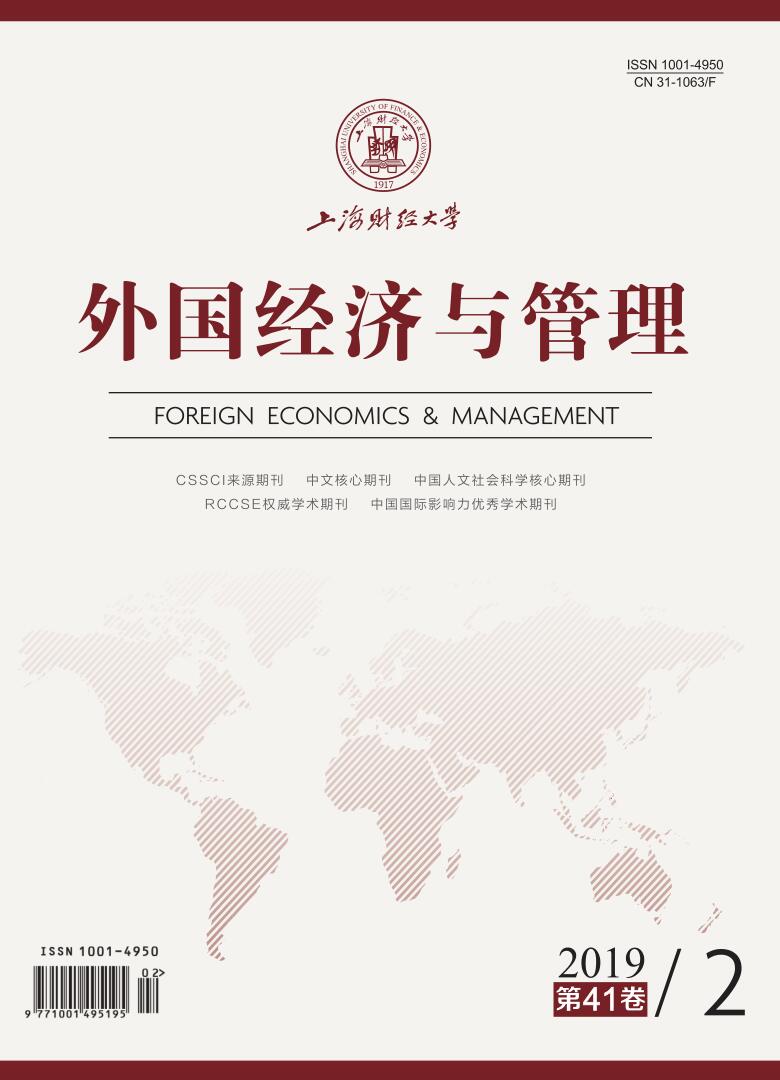品牌标识是品牌的关键视觉象征,对于创建品牌资产、建立消费者品牌忠诚有重要作用。端正和倾斜的品牌标识在生活中普遍存在,却少有学者考察它们对消费者产品评价的影响。本研究基于具身认知理论和隐喻理论,通过四个实验探讨了品牌标识的形状(端正VS.倾斜)对消费者产品评价的影响,并研究了感知运动的中介作用及产品创新类型的调节作用。实验一到实验三表明品牌标识形状的不同会使消费者的感知运动程度不同,端正的品牌标识会让消费者对产品有更高的可靠性评价,而倾斜的品牌标识则会让消费者产生更高的创新性评价;实验四证明了品牌标识的端正与倾斜会影响消费者的感知运动程度,而感知运动程度对产品评价的影响会受到产品创新类型的调节。本文丰富了品牌标识研究,并为品牌设计者及管理者提供了一定的参考和建议。
斜不胜正?品牌标识形状对消费者产品评价的影响研究
摘要
参考文献
2 马尔霍特拉•N.K.(著), 涂平(译). 市场营销研究: 应用导向[M]. (第5版). 北京: 电子工业出版社, 2009: 460.
8 钟科, 王海忠. 品牌拉伸效应: 标识形状对产品时间属性评估和品牌评价的影响[J]. 南开管理评论, 2015, (1): 64–76. DOI:10.3969/j.issn.1008-3448.2015.01.008
10 Baron R M, Kenny D A. The moderator-mediator variable distinction in social psychological research: Conceptual, strategic, and statistical considerations[J]. Journal of Personality and Social Psychology, 1986, 51(6): 1173–1182 DOI:10.1037/0022-3514.51.6.1173
11 Barsalou L W. Perceptions of perceptual symbols[J]. Behavioral and Brain Sciences, 1999, 22(4): 637–660 DOI:10.1017/S0140525X99532147
12 Cian L, Krishna A, Elder R S. This logo moves me: Dynamic imagery from static images[J]. Journal of Marketing Research, 2014, 51(2): 184–197 DOI:10.1509/jmr.13.0023
13 Cian L, Krishna A, Elder R S. A sign of things to come: Behavioral change through dynamic iconography[J]. Journal of Consumer Research, 2015, 41(6): 1426–1446 DOI:10.1086/680673
14 Gallese V, Lakoff G. The brain’s concepts: The role of the sensory-motor system in conceptual knowledge[J]. Cognitive Neuropsychology, 2005, 22(3–4): 455–479 DOI:10.1080/02643290442000310
15 Guido G, Pichierri M, Nataraajan R, et al. Animated logos in mobile marketing communications: The roles of logo movement directions and trajectories[J]. Journal of Business Research, 2016, 69(12): 6048–6057 DOI:10.1016/j.jbusres.2016.06.003
16 Hagtvedt H. The impact of incomplete typeface logos on perceptions of the firm[J]. Journal of Marketing, 2011, 75(4): 86–93 DOI:10.1509/jmkg.75.4.86
17 Hayes A F. Introduction to mediation, moderation, and conditional process analysis: A regression-based approach[M]. New York: Guilford Press, 2013.
18 Henderson P W, Cote J A. Guidelines for selecting or modifying logos[J]. The Journal of Marketing, 1998, 62(2): 14–30 DOI:10.1177/002224299806200202
19 Henderson P W, Cote J A, Leong S M, et al. Building strong brands in Asia: Selecting the visual components of image to maximize brand strength[J]. International Journal of Research in Marketing, 2003, 20(4): 297–313 DOI:10.1016/j.ijresmar.2003.03.001
20 Hoeffler S. Measuring preferences for really new products[J]. Journal of Marketing Research, 2003, 40(4): 406–420 DOI:10.1509/jmkr.40.4.406.19394
21 Hong J W, Sun Y C. Warm it up with love: The effect of physical coldness on liking of romance movies[J]. Journal of Consumer Research, 2012, 39(2): 293–306 DOI:10.1086/662613
22 Kille D R, Forest A L, Wood J V. Tall, dark, and stable: Embodiment motivates mate selection preferences[J]. Psychological Science, 2013, 24(1): 112–114 DOI:10.1177/0956797612457392
23 Lakoff G, Johnson M. Metaphors we live by[M]. Chicago: The University of Chicago Press, 1980.
25 Mayer R C, Davis J H, Schoorman F D. An integrative model of organizational trust[J]. Academy of Management Review, 1995, 20(3): 709–734 DOI:10.5465/amr.1995.9508080335
26 Mitchell A A, Olson J C. Are product attribute beliefs the only mediator of advertising effects on brand attitude?[J]. Journal of Marketing Research, 1981, 18(3): 318–332 DOI:10.1177/002224378101800306
27 Peracchio L A, Meyers-Levy J. Using stylistic properties of ad pictures to communicate with consumers[J]. Journal of Consumer Research, 2005, 32(1): 29–40 DOI:10.1086/jcr.2005.32.issue-1
28 Rahinel R, Nelson N M. When brand logos describe the environment: Design instability and the utility of safety-oriented products[J]. Journal of Consumer Research, 2016, 43(3): 478–496 DOI:10.1093/jcr/ucw039
29 Rowlands M. Extended cognition and the mark of the cognitive[J]. Philosophical Psychology, 2009, 22(1): 1–19 DOI:10.1080/09515080802703620
30 Sirdeshmukh D, Singh J, Sabol B. Consumer trust, value, and loyalty in relational exchanges[J]. Journal of Marketing, 2002, 66(1): 15–37 DOI:10.1509/jmkg.66.1.15.18449
31 Song X M, Montoya-Weiss M M. Critical development activities for really new versus incremental products[J]. Journal of Product Innovation Management, 1998, 15(2): 124–135 DOI:10.1016/S0737-6782(97)00077-5
32 Sorescu A B, Spanjol J. Innovationl’s effect on firm value and risk: Insights from consumer packaged goods[J]. Journal of Marketing, 2008, 72(2): 114–132 DOI:10.1509/jmkg.72.2.114
33 Thomas N, Mulligan J. Dynamic imagery in children’s representations of number[J]. Mathematics Education Research Journal, 1995, 7(1): 5–25 DOI:10.1007/BF03217273
引用本文
周小曼, 叶生洪, 厉佳, 等. 斜不胜正?品牌标识形状对消费者产品评价的影响研究[J]. 外国经济与管理, 2019, 41(2): 84-98.
导出参考文献,格式为:
上一篇:营销领域的社会支持研究述评与展望






 13740
13740  11674
11674

